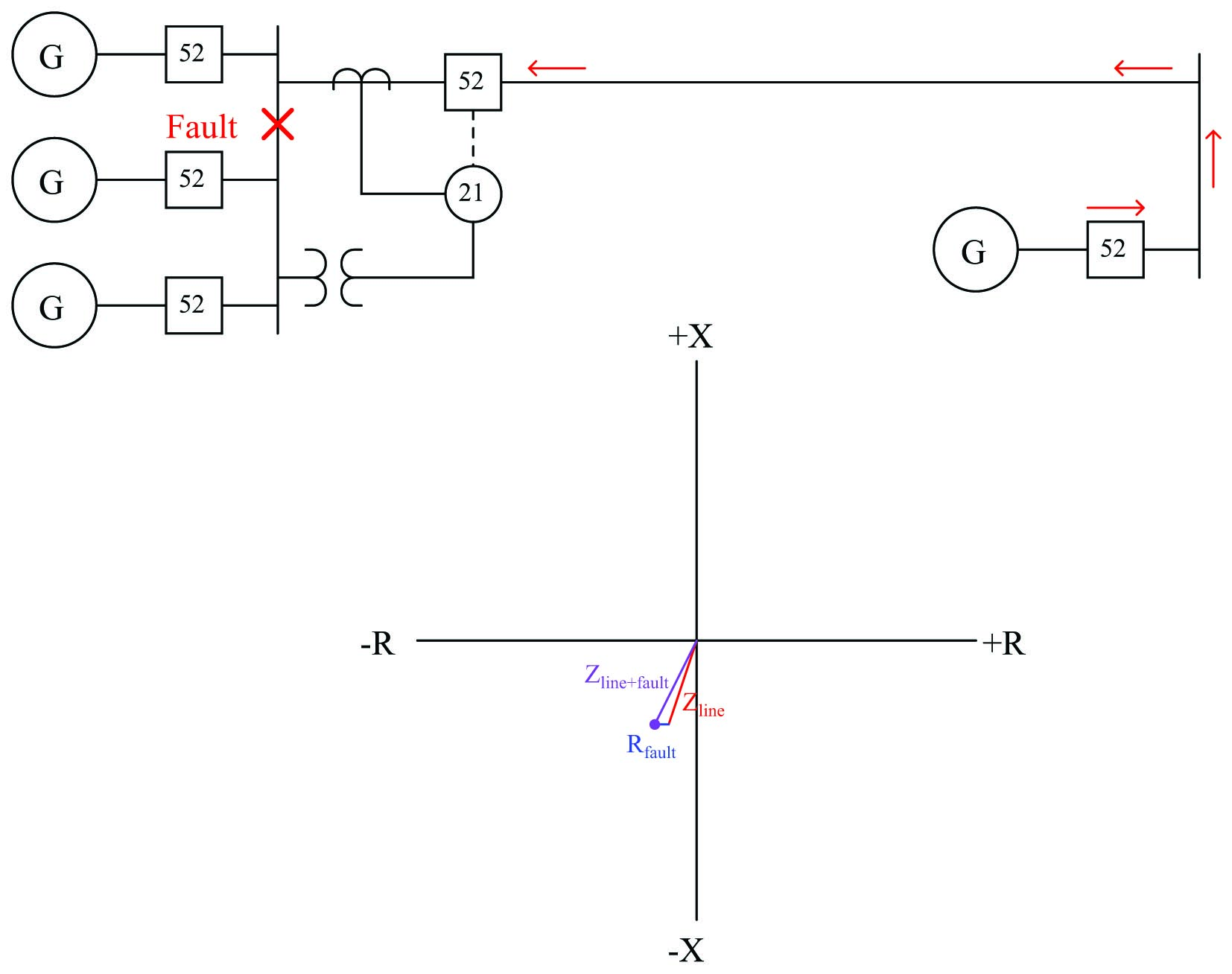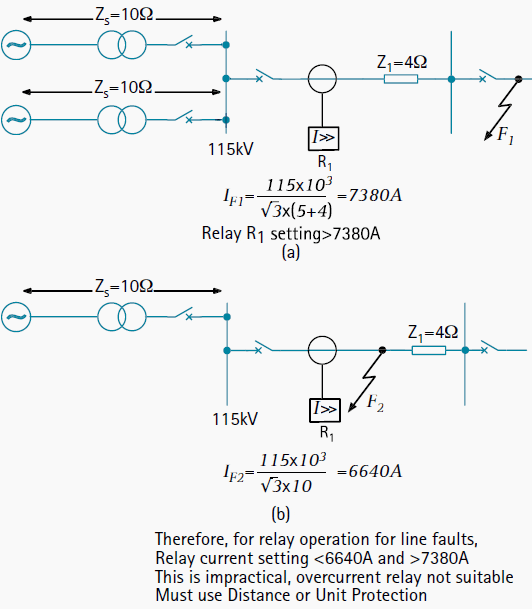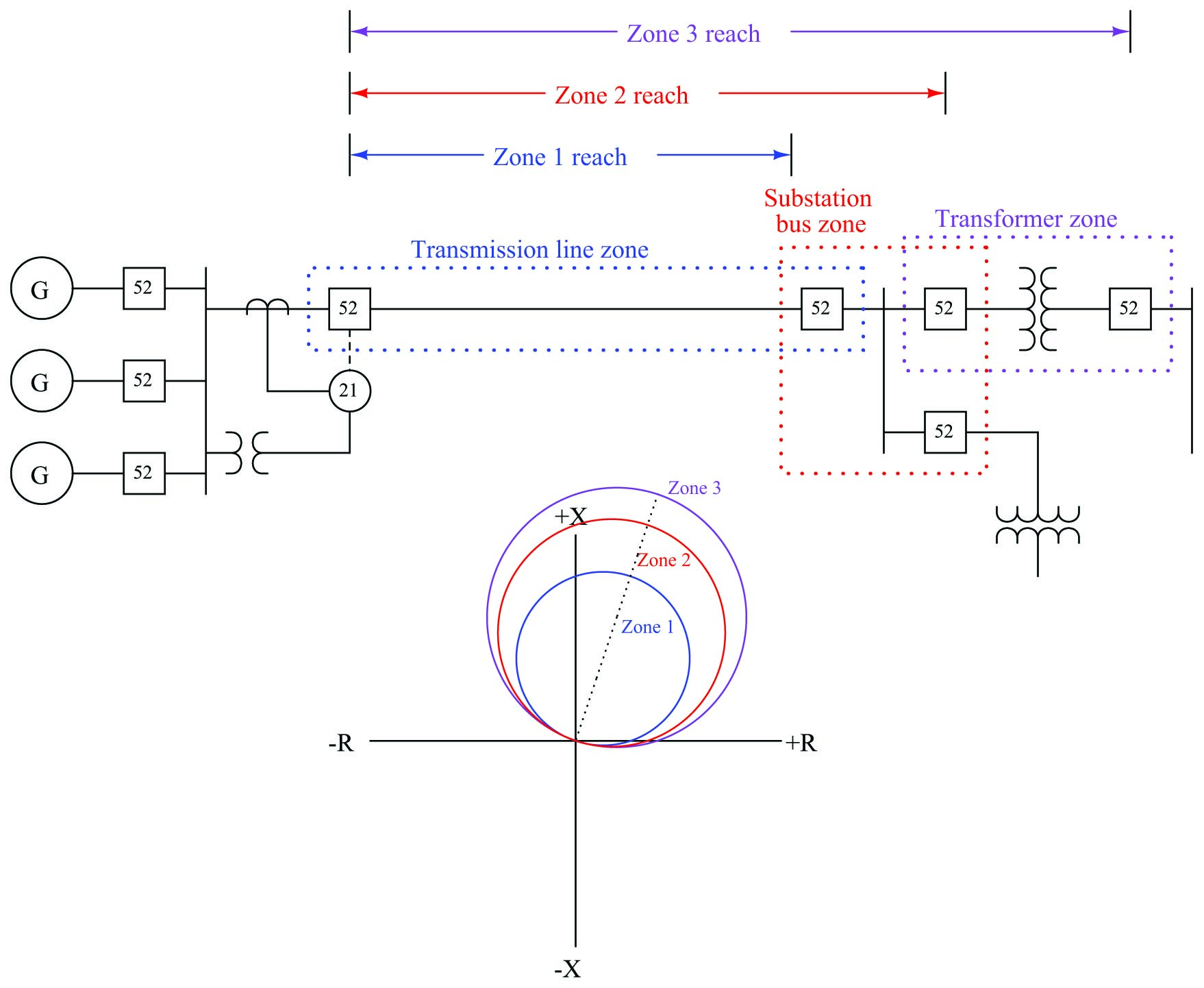Time Distance Relay impedance reactance or mho type. Optimized system loadingBuilt-in load encroachment logic allows you to securely apply distance protection elements on heavily loaded transmission lines.

Distance Relay Or Impedance Relay Working Principle Types Electrical4u
Improved system stabilityThe SEL zero-setting out-of-step OOS.

. A form of protection against faults on long-distance power lines is called distance relaying so named because it is actually able to estimate the physical distance between the relays sensing transformers PTs and CTs and the location of the fault. In this way it is a more sophisticated form of fault detection than simple overcurrent eg. An actuating part which transmits an action to the outside from the relay element.
Definite Distance Relay. Zones 1 and 2 preserve continuity of service or. Quadrilateral and mho distance elementsSEL transmission relays allow you to choose either or both.
Distance relays are one of the most important protection elements in a transmission line. 50 or 51 relay. Deal of de facto standardization of distance element design took place.
A distance element operates when. Quadrilateral characteristics are drawn using three elements. A distance relay on the Wehrendorf end of the Wehrendorf-Landesbergen 380kV.
Distance relays can provide effective transmission line protection. The below shows the balanced beam type definite. A sensing part which reacts to the external action.
Their characteristics have usually been created from comparators and various combinations of voltages and currents. Department of Energys Office of Scientific and Technical Information. SOPSPOL 90 2 For decades various relay technologies ha ve derived and compared the operating and polarizing signals differently.
The time of operation of such protection is a function of the ratio of voltage and current ie impedance. Reverse Ground Faults and Ground Distance Elements The operating quantities for ground distance elements include residual current 3I0. Just search for the distance element design technical paper and it is good.
Long reaching forward set ground distance elements can pick up for a close-in reverse ground fault on. A definite reach is highly desired in distance elements. It means a mho relay is a voltage controlled directional relay.
First in order to properly measure the distance to the fault using fundamental frequency voltages and currents all distance elements must go back to the same basic -phase three circuit diagram to tie the measured voltage and current with the distance. Membership Function Type Triangle 4. A mho relay using the induction cup structure is shown in the.
Used to measure the phase The number of entries 2 RX voltage and current line for each phase. The mechanism of this device was similar to a digital amplifier reiterating the signal and so permitting the signal which has to be propagated to the desired distance. October 25 2020.
Distance Protection is a Non-unit System of Protection which measures the Impedance between the Relay Location and the point where the fault is incident and compares it with the Set Value. Each of this elements has its own algorithm and different relay manufacturers provide different solutions. The constructional design of this type of relay can be a balanced beam-type or induction disc type that operates instantaneously for the fault up to a predetermined distance from the relay.
MN zone 2 and NO zone 2 relay elements. Construction of Definite Distance Relay. In this relay operating torque is obtained by the volt-amperes element and the controlling element is developed due to the voltage element.
A mho Relay is a high-speed relay and is also known as the admittance relay. Distance protection solutions include. These relays may sometimes be set based in percentages of the line impedances for example a typical setting for zone 1 is 80 of the impedance of the line in order to not reach the remote end the zone 2 can.
The mho characteristic for example is a popular design because it can be made from a single. The distance relay is a distance protection element designed to measure the faulty point. Distance protection relay principle differs from other forms of protection.
And an intermediate part which processes and transmits actions from the sensing part to the actuating part. Supervise Distance Elements Directional elements add security to all distance elements. An electromechanical distance may use a replica scheme.
Principles and Characteristics of Distance Protection. Protective relay applications relay designers introduced distance relay designs based on filtering and coincidence timing by using analogue circuits with semiconductors. It trips the circuit breaker and closes the contacts when the impedance of the faulty point is less than the impedance of the relay.
Distance element regardless operation of a particular relay design. Coordination is then obtained by adjusting the time delay of one or both of the overreaching zone 2 elements. From the design point of view a relay element consists of three parts.
Distance elements are used in line protection schemes for their definite reach. More specifically the relay operates depending upon the impedance between the point of fault and the point where relay is installed. The reactance element top resistance element sides and a directional element bottom.
But the relay which was currently in use today was designed by Samuel Morse in the year 1840. There is one type of relay which functions depending upon the distance of fault in the line. Detect the appearance of faults in the faults in the transmission line transmission line and then identify the type and location of the fault.
The operation of this relay depends on the value of the impedance. A time delayed tripping zone for back-up protection. This impedance between the relay and the fault depends on the electrical distance between them.
Figure 5 shows very schematically the contact circuits of the principal units. For transmission-line protection a single-phase distance relay of the impedance type consists of a single-phase directional unit three high-speed impedance-relay units and a timing unit together with the usual targets seal-in unit and other auxiliaries. Simple overcurrent protection lacks this property and its reach is highly dependent on the source impedance.
If the measured Impedance is less than the Set Value the Relay operates and Isolates the Faulty SectionSince the Line Impedance is directly Proportional to Line Length we. The principal type of distance relays is impedance relays reactance relays and the reactance relays. Free of the inherent inertia of electromechanical devices these distance.
These relays are known as distance relay or impedance relay.
Stepped Distance Protection Characteristics For The Relay R1 Download Scientific Diagram

Distance 21 Protection Electric Power Measurement And Control Systems Automation Textbook

Principles And Characteristics Of Distance Protection

Transmission Lines Distance Relay Basics And Tutorials Transmission Lines Design And Electrical Engineering Hub

Stepped Distance Quadrilateral Characteristic For All Zones Download Scientific Diagram

Distance Relay Or Impedance Relay Working Principle Types Electrical4u

Distance 21 Protection Electric Power Measurement And Control Systems Automation Textbook

Transmission Line Protection Software Distance Relay Setting Software
0 comments
Post a Comment